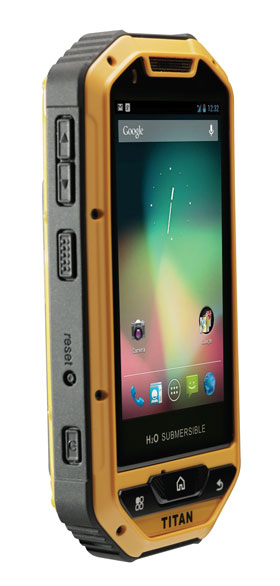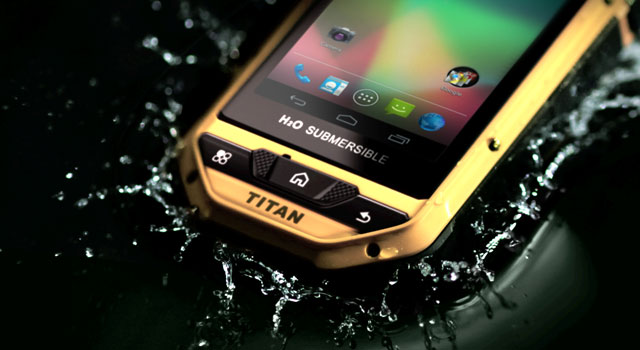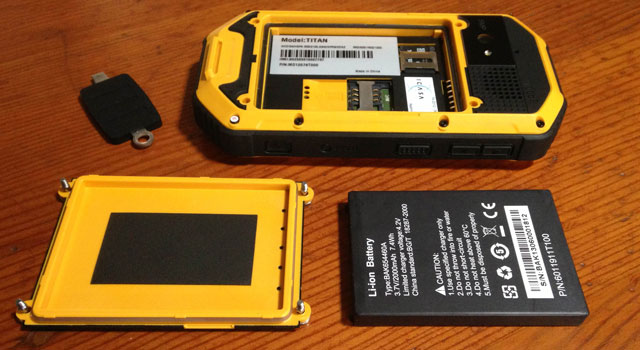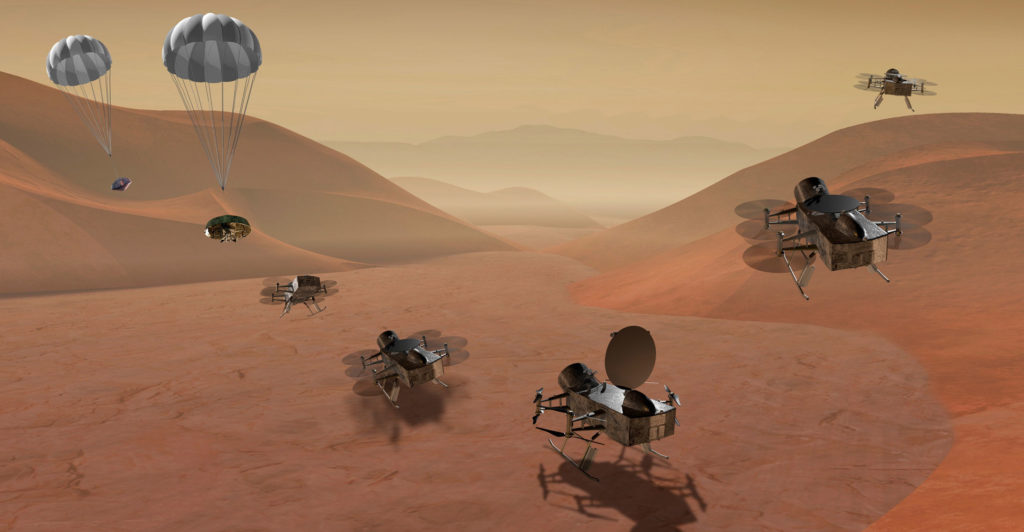 The Titan shock- and water-resistant Android-powered Rugged Phone has been designed for the toughest conditions a mobile phone is ever likely to encounter, and it certainly looks the part.
The Titan shock- and water-resistant Android-powered Rugged Phone has been designed for the toughest conditions a mobile phone is ever likely to encounter, and it certainly looks the part.
It doesn’t offer the latest and greatest in smartphone specifications, but it’ll probably survive a roughing-it adventure holiday through Africa and that, fundamentally, is its biggest selling point.
There’s no doubt the military grade, 205g Titan, which runs the now-slightly-dated Android 4.1, belongs in extreme conditions, because it looks pretty silly outside of them. Resembling an orange high-end flight case or underwater camera housing, the Titan understandably prizes functionality over form.
This goes some of the way to explaining its less-than-astounding feature set. At the centre of the handset is a 3,5-inch capacitive-touch display that offers a resolution of 800×480 pixels. The display is responsive and performs well in sunlight, but it feels a little cramped in use, particularly given the raised edge surrounding it and the physical options, home and back button beneath it.
The left-hand side of the Titan is home to the volume, power and dedicated camera keys, all of which are clad in heavy-duty plastic and sealed against water and dust. We found the lock/power button a little too small and unresponsive for our liking, but had no problems with the other buttons.
The right-hand side, meanwhile, houses the audio and micro USB ports, both of which sit beneath rubber covers, recessed by a few millimetres.
Given its target market of the intrepid and outdoorsy, it’s no surprise that the Titan includes a digital compass, GPS, barometer, flashlight, pedometer and a weather app called Go Weather FX.
The phone is powered by a 1GHz processor and 512MB of RAM — not exactly high end, but the software is snappy and handles multiple applications without any problems.
Internal storage is limited to 4GB, but there’s a microSD card slot and a 4GB card is supplied.
Obviously, the biggest selling point of the Titan is its ruggedness, and on this front there’s little to complain about. It can withstand 30 minutes in water up to a metre deep and carries an IP-67 rating. This is an International Protection rating for electrical enclosures. The “6” denotes that it is protected from dust, while the “7” means it can be submerged in water.

Of course, the Titan isn’t the only handset to offer protection from accidental aquatic encounters. Sony’s Xperia Z makes the same claims of water resistance, but without the bulk of the Titan. Of course, you can’t slam the Xperia against a wall and still expect to make a call.
The Titan complies with the requirements of the US military’s MIL-STD-810G standard, and this achievement is etched into the rear cover, along with its IP-67 rating. Similarly, the face of the device (unfortunately) carries the message “H2O submersible” beneath the display — an unnecessary addition that detracts from its design.
Included in the box are a USB cable and two-pin wall plug adaptor, a small screwdriver for removing the screws that keep the battery cover in place, and a pair of cheap-feeling headphones. We suspect the headphones are less well suited to the war zones, mines, oil rigs and mountainous terrain for which the rest of the device appears intended.
Although the 2 000mAh battery is replaceable — a great feature if you’re on the road a lot — you’ll need to carry a flathead screwdriver to get the rear cover off. While the screws add to the rugged look of the Titan, they don’t sit flush with the rear cover and could scratch glossy surfaces.

The device is shock resistant for drops up to 2m and our tests of this confirmed the claim. The Titan survived multiple tumbles on a concrete floor, though one such fall did result in it switching off. However, it booted again with no complaints.
In order to ensure the device is audible on construction sites, mines or in other noisy environments it includes a speaker capable of 100dB output, which is situated next to the rear-facing camera.
Keen mobile photographers may find the 5-megapixel rear camera lacking in resolution, but the results from it are okay. There’s also a VGA front-facing camera for video calling.
Ultimately, the Titan is designed for a specific market with specific needs, and on the whole it addresses these well. What it could do with is a larger screen, a higher-end camera and a newer version of Android, but these would all doubtless push up the price, another area where the Titan performs well.
Despite its high-end materials and durability, the Titan costs just R4 499.
For those who want a little more screen real estate there’s a 5,3-inch model, the 5R, coming soon. — (c) 2013 NewsCentral Media


